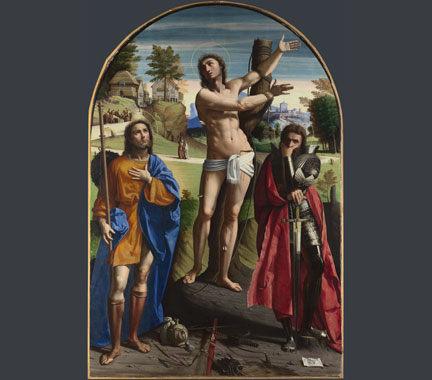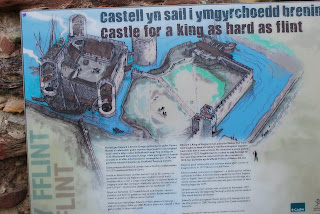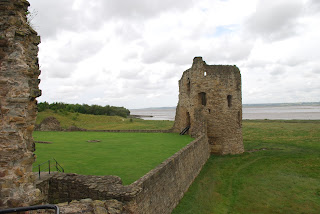With the coming of war, the Nazis began a programme to gas the mentally ill, which was codenamed "T4".
Such a programme obviously accorded with Nazi eugenic ideas. In 1929 Hitler had attacked the "sentimental humanitarianism" of maintaining the weak at the expense of the healthy, and soon after coming to power a law was enacted for the compulsory sterilisation of people of part negro race and other "inferiors", and in the winter of 1938-9 came the "Knauer case", where the father of a handicapped boy petitioned Hitler for euthanasia. Hitler not only gave his approval, but authorised his personal phyysician, Dr Brandt, and Philip Bouhler of the Fuhrer Chancellery (the KdF) to take similar action in future. Thus in August 1939 the "Reich Committee for Scientific Registration of Serious Hereditarily and Congenitally Based Illnesses" was set up. Doctors and midwives were ordered to register serious mental and physical defects at birth, and forward them to the Reich Committee, who would make the decision on life or death by means of a plus or minus sign on the document. Those condemned as "living burdens for the nation" were taken to special clinics where they were either poisoned or left to die of malnutrition. It is not known how many children were killed under this procedure; presumably several thousand.
Sometime in summer 1939 authorisation was given for the euthanasia of adults; once again to be controlled by Brandt and Bouhler of KdF. The Ministry of the Interior was to order the registration of people who fell into such categories as the mentally disturbed, feeble-minded, paralytic, senile, epileptic and criminal lunatics; with just a few classes such as war veterans being excluded. Again, plus or minus signs by the assessors led to life or death. Carbon monoxide gas was decided on as the best method of killing; the first operation being carried out at the Brandenburg Asylum near Berlin, where twenty vitims were locked in a shower room and poisoned by gas pumped in from cylinders. After a few minutes, teams nicknamed "burners" extracted any gold teeth and SS squads removed the bodies to a crematorium. There was, we are told, "no disorder".
Following the defeat of Poland, several thousand Polish mental patients were shot, and others were poisoned with monoxide in a specially converted furniture van by an SS unit, but these appear to have been ad hoc killings on local initiative.
In October 1939 (the precise date being uncertain) Hitler signed a document authorising Bouhler and Brandt "to extend the powers of certain doctors in such a way that ..... those suffering from illness deemed incurable to be granted a merciful death". (There was never a formal law on euthanasia, nor has a directive authorising the Holocaust ever been found). A body named the "Reich Association of Asylums" was set up. Control of the operation was given to Department II of the KdF, whose head office was at Tiergarten 4 in Berlin; hence the codename "T4" for the whole project. A Chancellery official, Viktor Brack, was placed in charge. Euthanasia centres were set up, post office vans used as transport,and asylum directors instructed as to how many patients they would be required to supply.
By May 1940 a centre at Hartheim ner Linz in Austria was ready to operate, with a system so efficient that it formed the model for all later mass killings. The victims were undressed and taken to a gas chamber disguised as a shower room, where they were poisoned with carbon monoxide. Squads then extracted and goldteeth and removed the bodies to a crematorium. An unusual feature was that relatives were informed of the unfortunate demise of loved ones from illness, and sent urns of ashes. The site was responsible for perhaps 20,000 deaths. Another successful site was at Hadamar in Hesse, where a party was held to celebrate its ten thousandth gassing.
Himmler enetered the scene in summer 1940 when he requested the extension of the programme to cover sick inmates of the concentration camps. These victims were taken to euthanasia centres and gassed; an operation codnamed 14F13.
There were strict instructions that the programme be kept secret, but this proved impossible. Mistakes were made informing relatives, such as a case where a victim was said to have died of appendicitis, when his appendix had actually been removed ten years earlier. Many of the guards, unable to take the strain of the horrors they had witnessed, took refuge in getting blind drunk in local taverns. People living near Hadamar noted the evil-smelling smoke from the crematorium chimney, which they soon learnt to associate with the arrival of the transports. Worst of all, children took to shouting "Here come some more to be gassed!" as the blacked-out vans arrived, and taunted each other with, "You're stupid! You'll be put in the oven in Hadamar!" Eventually this led to one of the very rare acts of public opposition to Nazi rule.
The Bishop of Munster was Cardinal August, Count von Galen; an aristocrat as well as a Prince of the Church; a Catholic consrvative anda close friend of Vice-Chancellor Franz von Papen. For more than a year hehad been concerned by reports of euthanasia, and on August 3rd 1941 he preached a sermon in which he denounced the T4 programma as murder of the innocent. This was an immediate sensation, as thousands of copies of the sermon were printed and circulated. Von Galen was not alone: a few days later the Bishop of Limburg, whose diocese included Hadamar, wrote to the Ministry of Justice complaining about what had been happening. There were some minor public demonstrations, including even one against Hitler himself on a visit to Bavaria when the arrivalof his train happened to coincide with the reoval of some mentally handicapped children.
The Nazi leadership was furious, but helpless. As Goebbels commented, the best reponse would have been to hang the Bishop, but since at that stage they did not want to antagonise the church, they could do nothing but retreat. And so on August 24th the Nazi regime, in one of its very few reversals under public pressure, ordered a halt to he T4 programme. It has been estimated that some 70,000 victims had been killed in five major centres.
The obvious suspicion is that T4 was in the nature of a dress rehearsal or dry run for the Holocaust. The first gassings of Jews began not long afterwards, and some of the personnel involved were inherited from T4. The first commandant at Hartheim was Christian Wirth ("the savage Christian"), who soon became a kind of roving inspector of the euthanasia centres, and then a few months later could be found in charge of the first death camp at Chelmo, where Jews were gassed with carbon monoxide fumes in converted furniture vans. Another recruit for T4 was an Austrian policeman named Franz Stangl, who would later be placed in charge of the massive extermination camp at Treblinka. The Nazis may also have learnt that secrecy could not be maintained if extermination was carried out on German soil, so all the death camps were built in occupied Poland. But all this implies a degree of forward planning seldom to be found in Nazi Germany.
Sunday, 31 May 2020
Monday, 18 May 2020
Saints against the plague
Two saints whose aid was traditionally invoked against the plague were Saint Roch (or Rocco) and Saint Sebastian.
.
.

Saint Roch is said to have been born in Montpellier in the south of France in the 14th century. He went on a pilgrimage to Rome, where the plague broke out, and he healed many of the disease before catching it himself. He was first succoured by a dog, and recovered. He then returned to his native town, but he had been away so long that no-one recognised him and he was thrown into prison, where he died. Saint Roch is shown pointing to the plague-spot on his thigh, and holds a pilgrim's staff. He is accompanied by a dog.
.
.
Almost nothing is known for certain about Saint Sebastian. He is supposed to have been an early Christian martyr, who was shot with arrows during the persecution of the Emperor Diolcletian, though he recovered from this and was battered to death instead. He is portrayed as a scantily-clad young man full of arrows, tied to dead tree. It is possible that his connection with the plague is that the arrows, and the fact the he recovered from them, symbolise the invisible arrows of the disease. He has of late become something of a Gay icon.
Here are Rocco and Sebastian together with Saint George, in an Italian Renaissance painting in the National Gallery in London.
.

I wonder if Saints Roch and Sebastian are suitable saints to be invoked for protection against the Corona virus? Or do we stand in need of new saints?
Sunday, 3 May 2020
Flint Castle, Wales
Flint castle lies on the west bank of the river Dee, on the road leading to the north coast of Wales. It was one of the earliest of Edward I's Welsh castles, built in his plan to subdue and hold the rugged north of the province. From summer 1277, workmen were being recuited: diggers, masons, carpenters and smiths; and timber and stone obtained. Accounts survive showing the payment given for wages and materials; and by the time work was completed at the end of 1286, the total cost came to about £7,000. It was actually one of the cheapest and least elaborate of Edward's Welsh castles.
.
The castle takes the form of an inner ward, exactly square in shape, with round towers at the four corners. This is the north-east tower:-
and the south-west one. Apart from the southern section, the curtain walls have been reduced to ground level.
.
The most noted feature is the massive south-eastern tower, which was designed to stand as a separate fortress if needed, being separated from the rest of the castle by a moat, and reached by a drawbridge.
South of the main castle, and separated by a moat, was a large outer ward. Originally the River Dee flowed by the northern and western walls, but it has since silted up considerably, and is now some distance away
Flint was the scene of a crucial and epoch-making incident in English history in August 1399, when King Richard II, returning from Ireland, was intercepted and taken there by his cousin, Henry Bolingbroke, and held as effectively a prisoner. Richard was compelled to abdicate in favour of Henry, and taken to Ponterfract castle in Yorkshire, where he was presumably murdered soon afterwards.
.
.
The castle takes the form of an inner ward, exactly square in shape, with round towers at the four corners. This is the north-east tower:-
and the south-west one. Apart from the southern section, the curtain walls have been reduced to ground level.
.
The most noted feature is the massive south-eastern tower, which was designed to stand as a separate fortress if needed, being separated from the rest of the castle by a moat, and reached by a drawbridge.
South of the main castle, and separated by a moat, was a large outer ward. Originally the River Dee flowed by the northern and western walls, but it has since silted up considerably, and is now some distance away
Flint was the scene of a crucial and epoch-making incident in English history in August 1399, when King Richard II, returning from Ireland, was intercepted and taken there by his cousin, Henry Bolingbroke, and held as effectively a prisoner. Richard was compelled to abdicate in favour of Henry, and taken to Ponterfract castle in Yorkshire, where he was presumably murdered soon afterwards.
.
Subscribe to:
Comments (Atom)





